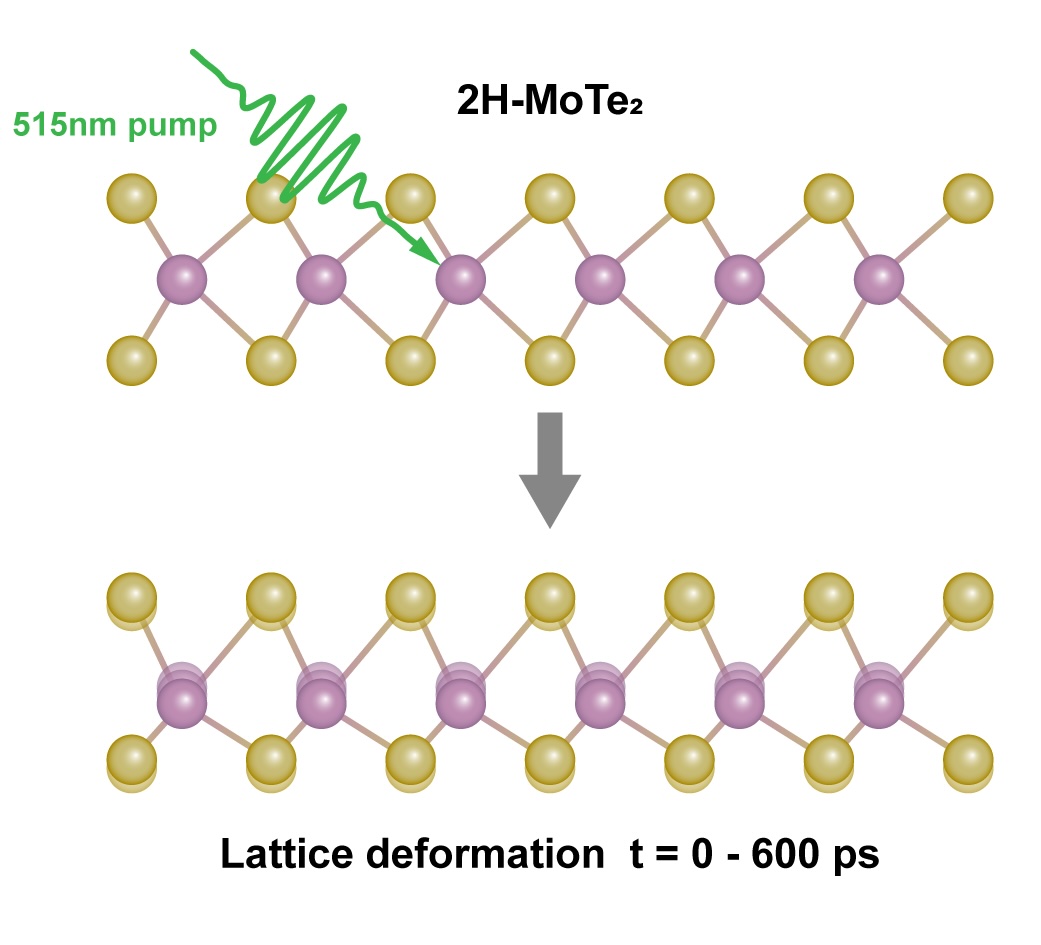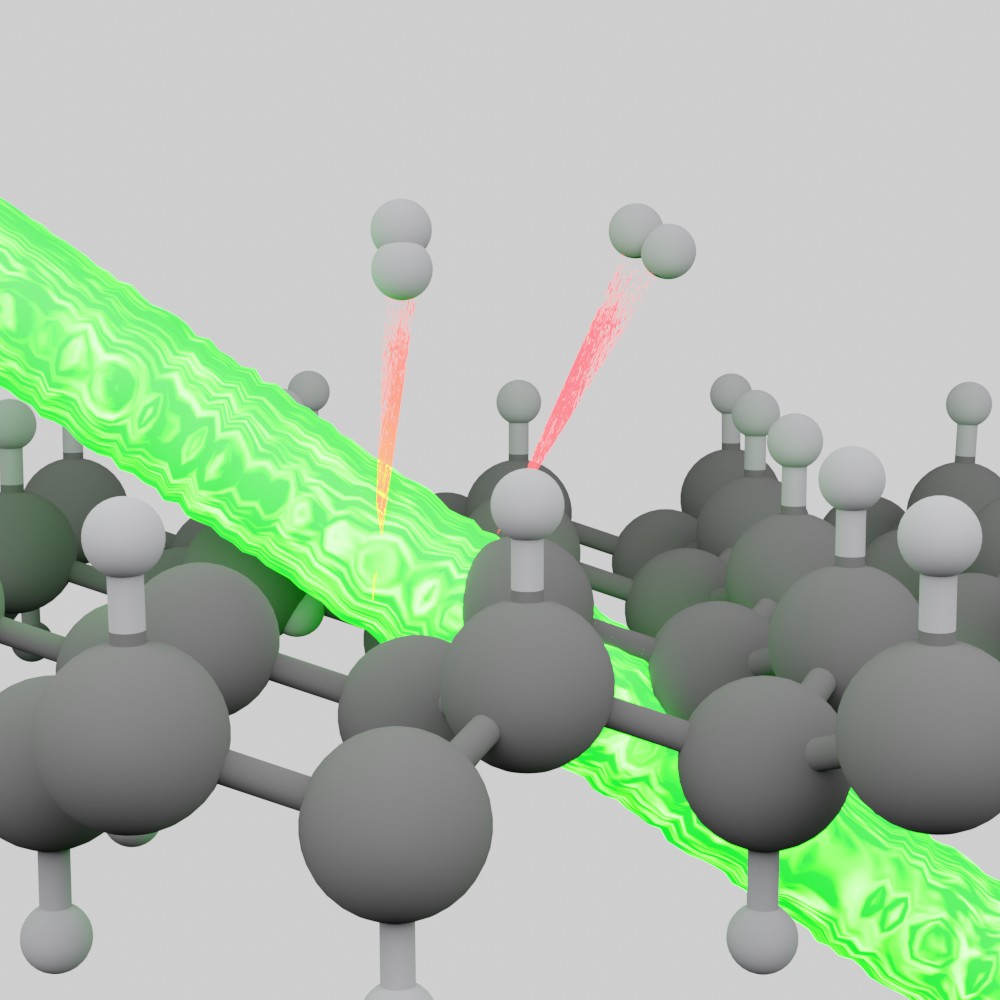Photo-induced lattice distortion in 2H-MoTe2

 By using laser pulses to pump a system and synchrotron X-ray pulses to probe it, we can observe the
evolution of chemical properties on sub-nanosecond time scales. This approach is fundamental for understanding the stability
of novel materials for optoelectronics under optical excitation.
Our goal is to characterize how light alters the physical, chemical, or electronic properties of the materials on
ultrafast timescales.
By using laser pulses to pump a system and synchrotron X-ray pulses to probe it, we can observe the
evolution of chemical properties on sub-nanosecond time scales. This approach is fundamental for understanding the stability
of novel materials for optoelectronics under optical excitation.
Our goal is to characterize how light alters the physical, chemical, or electronic properties of the materials on
ultrafast timescales.
Photo-induced phenomena span diverse mechanisms, including phase transitions, refractive index changes, and optical
anisotropy. For instance, in quantum materials, photo-induced phase transitions (PIPTs) enable selective control of electronic,
lattice, and spin degrees of freedom. This has applications in tuning charge density waves or inducing metal-insulator transitions.
Additionally, photoinduced birefringence in polymers offers real-time optical control for advanced photonic systems.
Such studies are critical for advancing technologies like nanoelectronics, photocatalysis, and photonic networks by
manipulating matter at molecular or atomic levels.

